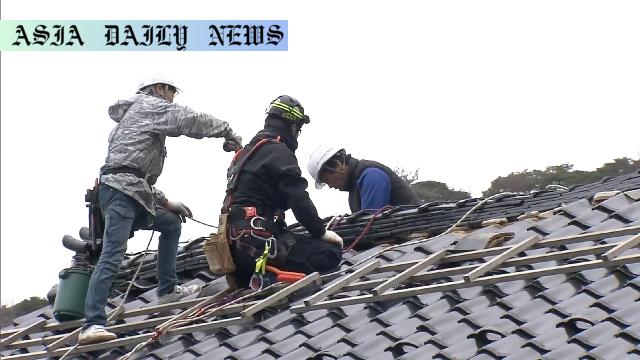Reconstruction efforts are stalled in Ishikawa due to acute labor shortages and limited accommodation for distant workers.

Devastating Impact of the Ishikawa Earthquake
The powerful earthquake that struck Ishikawa Prefecture on New Year’s Day 2024 has left a deep imprint on both the physical and emotional fabric of the region. Over 115,000 houses were reported damaged by February 2024, leaving many families in turmoil. While residents are eager to rebuild their homes and return to a semblance of normalcy, the effort to repair or reconstruct housing has been hampered by a severe shortage of construction labor. This issue is particularly pronounced in the Oku-Noto region, a hard-hit northern area of the prefecture. Families waiting for their homes to be rebuilt have been told that it could take nearly another year before construction can even begin.
Challenges in Attracting and Retaining Skilled Workers
The labor shortage affecting Ishikawa’s reconstruction efforts is not merely a local issue; it stems from broader systemic challenges. Construction companies are finding it increasingly difficult to bring in workers from urban hubs such as Kanazawa City, due to a lack of suitable accommodations in the Oku-Noto region. Without sufficient housing and resources to support incoming laborers, reconstruction plans are facing further delays. This bottleneck exacerbates an already dire situation and poses a significant challenge for the prefectural government as it seeks to remedy an unfolding crisis.
Population Decline: A Compound Crisis
The aftermath of the disaster has seen not only physical devastation but also a sharp decline in the local population. Within a year of the earthquake, the population in Oku-Noto’s towns and cities dropped by 8.4%. This exodus, driven largely by residents who have grown weary of delays and uncertainty, further complicates reconstruction efforts. Experts, such as Kanazawa University’s Toyoshima Yuki, highlight the risk of permanent depopulation if labor shortages persist and if local authorities fail to address housing reconstruction effectively. The dwindling population also creates economic challenges, making it even harder for these communities to recover.
Proposed Solutions and Ongoing Initiatives
Recognizing the gravity of the situation, the Ishikawa prefectural government has introduced measures aimed at mitigating the reconstruction crisis. Financial support is being offered to both residents and construction firms in an attempt to expedite building processes. Public consultation events and an informative government website are also being leveraged to keep residents informed and engaged. However, experts argue that these measures need to go further, with recommendations including significantly expanding worker accommodations in the Oku-Noto region and incentivizing urban workers to temporarily relocate for reconstruction projects. Addressing this acute labor shortage is critical to rebuilding not only homes but also the trust and commitment of Ishikawa’s displaced residents.
A Way Forward
While the challenges of reconstruction in Ishikawa Prefecture are immense, they also present an opportunity for systemic reforms. By investing in infrastructure to support a mobile workforce, implementing advanced construction technologies, and fostering collaboration between government, industry, and academia, a more resilient reconstruction process can be achieved. Furthermore, targeted efforts to maintain population stability and encourage displaced residents to return will be crucial in preserving the cultural and economic vitality of the Oku-Noto region. It is imperative that all stakeholders take swift, decisive action to rebuild Ishikawa stronger and more efficiently.
Commentary
The Human Toll of Reconstruction Delays
One of the most striking aspects of the reconstruction delays in Ishikawa Prefecture is the profound human toll it takes on the affected residents. Families who have seen their homes and communities ripped apart by the earthquake are now being forced to endure not only the emotional trauma of the disaster but also the frustration and uncertainty of prolonged rebuilding efforts. For many, this means spending an additional year or more in temporary accommodations, unable to fully return to their routines or plan for the future. The emotional weight of such circumstances cannot be overstated.
Labor Shortages: A National Concern
The labor shortage in Ishikawa highlights a broader issue that Japan faces as a whole: an aging workforce and a shrinking labor pool. These demographic trends are particularly detrimental in industries like construction, where a physically demanding skill set is needed. The Ishikawa government’s struggle to attract workers from other regions underscores the necessity of enhanced national policies aimed at addressing these labor gaps. Whether through expanded immigration pathways, increased investment in workforce training, or support for automation technologies in construction, there is a pressing need for systemic change.
Learning from Previous Disasters
This is not the first time Japan has faced challenges in post-disaster reconstruction. Previous natural disasters, such as the 2011 Tohoku earthquake and tsunami, have offered valuable lessons on managing large-scale rebuilding efforts. Ishikawa can apply these lessons by fostering public-private partnerships, establishing clear timelines for reconstruction, and maintaining transparency with affected residents. Moreover, the prefecture’s response to the current crisis could serve as a model for dealing with future disasters in rural regions. Proactive planning and preparedness will be key in ensuring that such delays do not repeat themselves.


